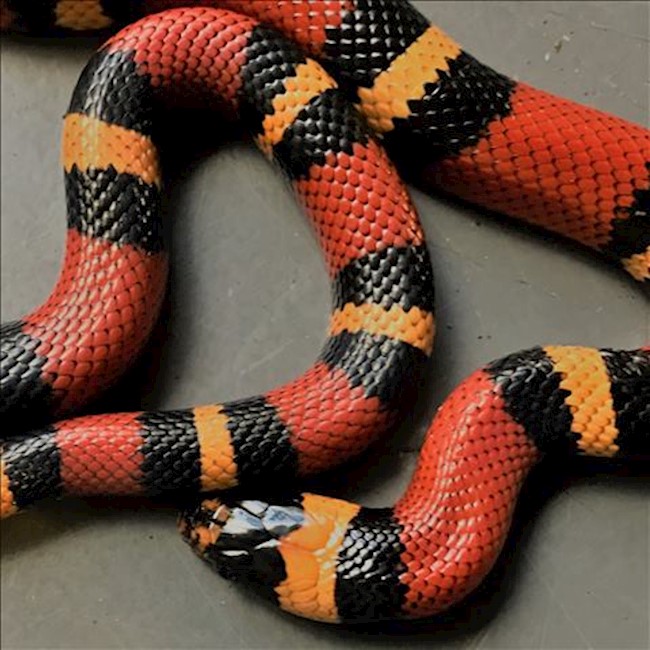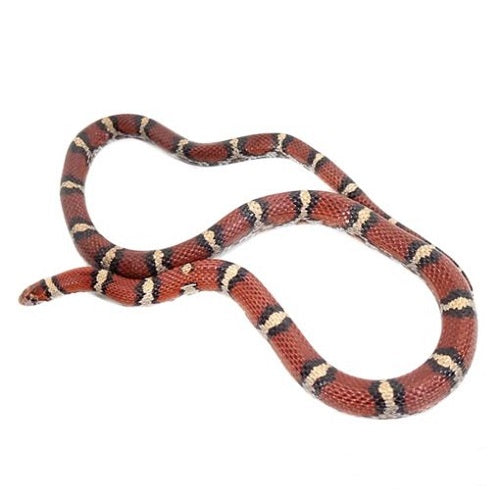

This snake will be nervous initially, but it will quickly adapt to captivity. These snakes enjoy a smaller enclosure with plenty of substrate. Although these snakes grow to 48 inches, they are shy.

Honduran milk snakes are the gentle giants of this genus. Honduran Milk Snake (Lampropeltis Triangulum Hondurensis) This adds to the Eastern milk snake’s reputation as a low-maintenance reptile.

The color markings tend to be rusty, or even dull. The Eastern milk snake is not the most striking of subspecies. In addition, this snake can thrive in slightly cooler ambient temperatures. This subspecies is a popular pet as it is among the most docile of all milk snakes. Eastern Milk Snake (Lampropeltis Triangulum)Įastern milk snakes are commonly located in the wild in the United States. Many adult Black milk snakes live up to their moniker, the scales turning deep black. Many hatchling Black milk snakes are bright red, orange or yellow.Īs the snake ages, it will grow darker. Black will feature, but usually only on bands. Young Black milk snakes come in a range of colors. In a temperature above 80 degrees, a Black milk snake will grow overweight. The warmer the snake is, the faster is metabolizes meals. An adult Black milk snake can happily eat a medium-sized rat per week. Black milk snakes can grow large and will Temperature is important to Black milk snakes due to a healthy appetite. If your snake is housed in a cold room (below 70 degrees), provide a basking lamp. Black milk snakes are happiest with an ambient temperature of 75 degrees. This snake prefers to live in a slightly cooler climate. Black milk snakes are also hardy, rarely becoming sick, and will always eat heartily.īlack milk snakes have different temperature needs to other subspecies. They don’t mind human interaction and being handled. If you are looking for an easier snake to care for, consider a Black milk snake. Black Milk Snake (Lampropeltis Triangulum Gaigeae) A healthy, well cared for milk snake can live up to 20 years. These snakes are typically suitable for any home, with the appropriate attention. Other subspecies, such as Stuart’s milk snake and Conant’s milk snake, are rare and expensive. The New Mexico milk snake is timid and will provide little entertainment. These breeds are fussy eaters, and thus become prone to illness. The Central Plains milk snake or Louisiana milk snakes are suitable for experienced snake handlers only. If you are new to keeping snakes as pets, some milk snakes are best avoided. Breeding is the obvious exception to this rule. The snakes will attack each other, and one is likely to be eaten. Never attempt to keep two milk snakes in the same enclosure. Provide stimulation in the form of rocks and burrowing substrate. Ensure that your enclosure is secure without sacrificing comfort or ventilation. This important to note, as these snakes can be escape artists. Once a milk snake has adapted to its surroundings, it will become curious. They rarely bite, but may musk in self-defense. All the same, these snakes can be skittish. Most pet milk snakes are bred in captivity. Different subspecies have differing appetites. Each of these has different needs.Īll milk snakes are nocturnal and should be fed a diet of frozen rodents. Remember though, there are 24 different sub-species of milk snake. Breeders often combine different sub-species of milk snake to create interesting new patterns and aesthetics. Milk snakes of all shapes and sizes are very popular pets. This is because some milk snakes resemble coral snakes. Despite this, a milk snake can spark panic in the wild. Milk snakes are nonvenomous and have tiny teeth, making their bite almost imperceptible to a human. Milk snakes are popular due to a passive nature and striking appearance. They are also frequently bred in captivity to be kept as pets. Wild milk snakes (Lampropeltis triangulum) are found throughout the United States. 1.1.8 Sinaloan Milk Snake (Lampropeltis Triangulum Sinaloae) What Is a Milk Snake?


 0 kommentar(er)
0 kommentar(er)
